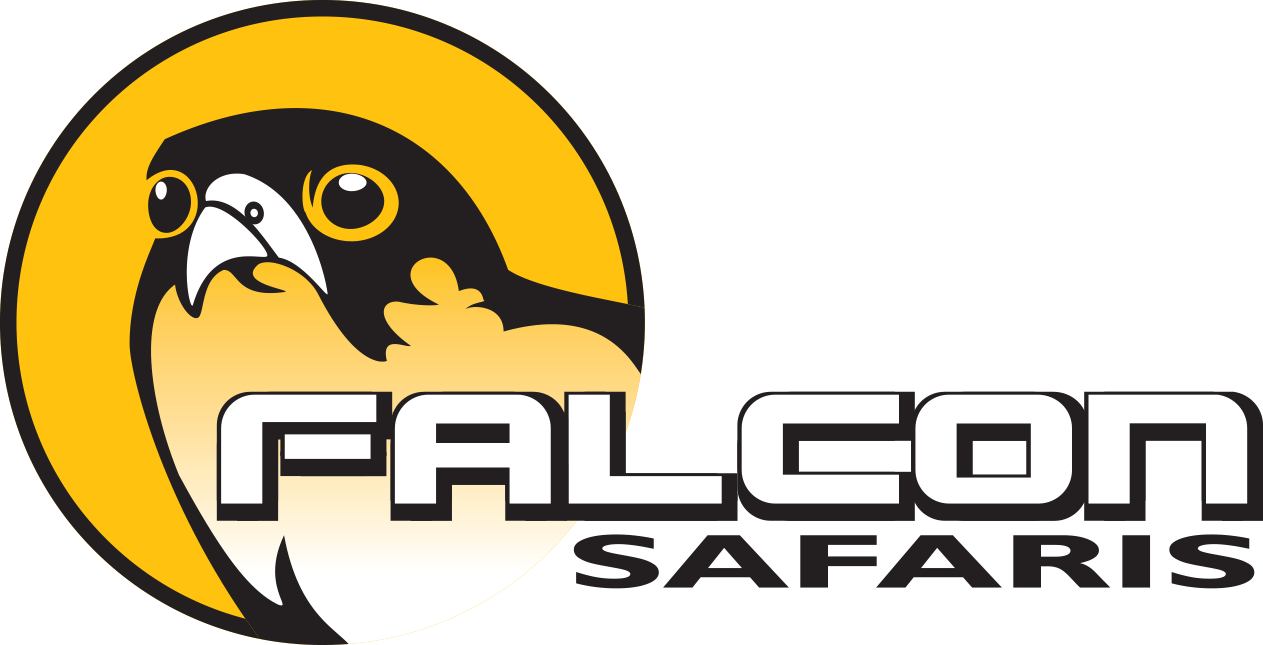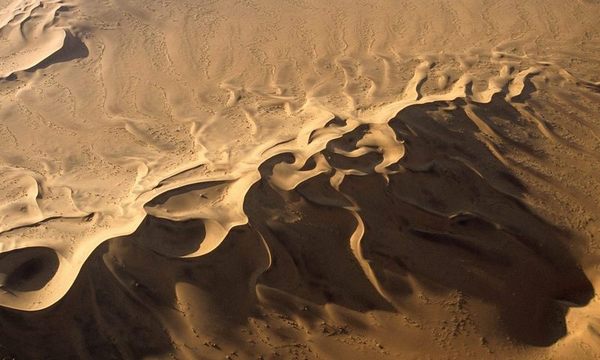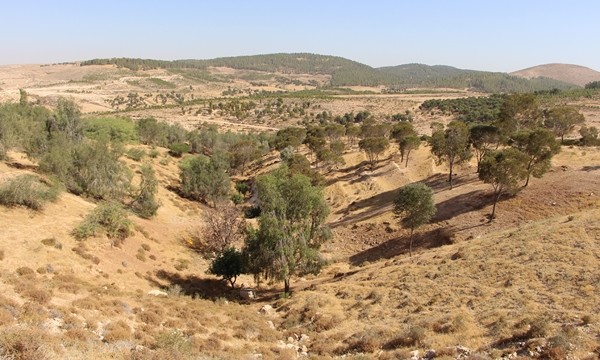Call Us
8:00am - 17:00PM
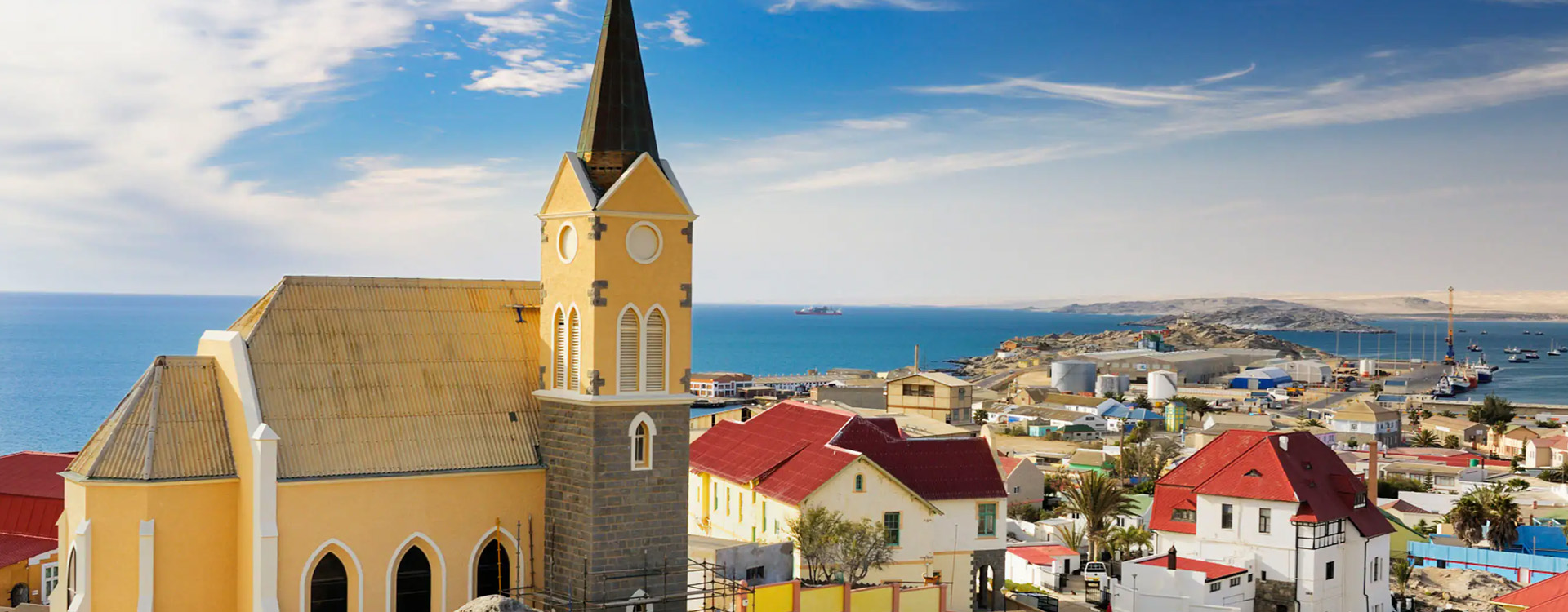
Luderitz
About Luderitz
Luderitz is located in Karas Region in Namibia. Despite of being located in one of Africa’s most inhospitable regions, Namibia is worth visiting. This city is known for charming German Art Nouveau buildings.
From capturing its stunning beauties to witnessing its colourful festivals, there’s a lot to discover on Luderitz Tours. And, if you’re on a Namibia Safaris, you should not miss this charming town, Luderitz.
Luderitz Tours and Safaris
We Think You’ll Love
Best time to visit
The Best Time to Visit Luderitz is from December to March. During these months, the weather in Luderitz is comfortably warm, offering clear skies and minimal humidity, making it ideal for exploring this charming town and its surroundings. Despite the constant winds, this period provides the most pleasant climate for enjoying outdoor activities and soaking in the natural beauty of the area.
Wildlife
Luderitz offers a unique Namibia Wildlife adventure, where the ocean's charm meets the desert's mystery. You can spot playful Benguela dolphins, cosy Cape fur seals, and even African penguins by the shore. Overhead, look for Damara terns and flamingos, while wild horses and springboks roam the land. It's a fascinating mix of marine and desert creatures, inviting you to explore and connect with nature during your Namibia Safari.
What To Experience
We think you will love
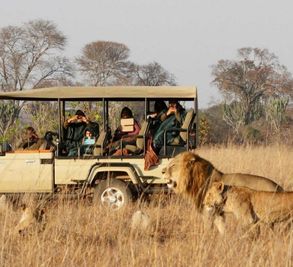
Game Drives
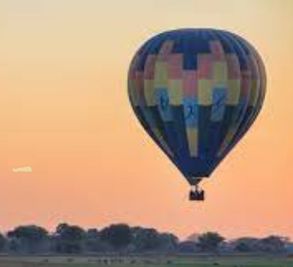
Ballon Safari
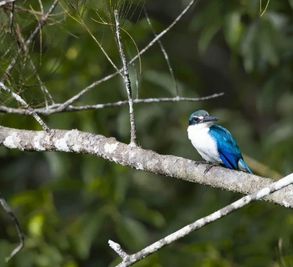
Birding

Walking Safari
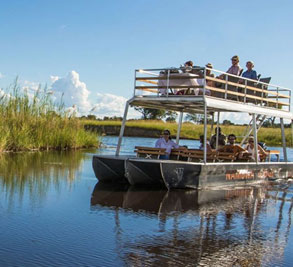
Boating Safari
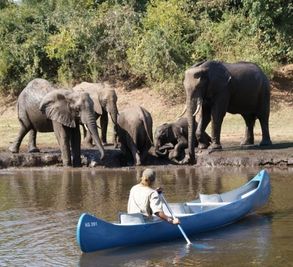
Canoeing
Travel Guide For Luderitz
We Think You’ll Love
History of Luderitz
Luderitz was named after the German merchant Adolf Luderitz, who founded this city as a trading post. This town served as the capital of German South-west Africa, until 1915, when it was occupied by South African forces during the First World War.
After the end of the war, his town became part of the South African mandate of the territory. The German influence can be seen in its colonial buildings, which you can explore during Luderitz Tours.
Geology and Climate of Luderitz
The geological province of Luderitz is dominated by Namaqua- Natal Province, which is a province in southern Africa, formed about 2.5 billion years ago. This province is characterized by a complex geology of sedimentary, igneous, and metamorphic rocks.
Moving the climate part, Luderitz experiences a cool desert climate, with low precipitation, and mild temperatures around the year. The cool ocean current along the coast help to moderate the temperatures.
In Luderitz, the average rainfall is less than 20 mm. and its mostly rains in the months of June to August. The average temperature in Luderitz ranges from 12 degree Celsius in July to 19 degrees Celsius in Feb, with a little variation throughout the year.
The fusion of the cool desert climate and the unique geology of the area creates a stunning landscape. The rugged coastline is characterized by rocky cliffs and sandy beaches. The inland from the coast is subjugated by vast expanses of desert, with scattered vegetation and occasional mountain ranges. The surrounding area near Luderitz is also rich in minerals, including diamonds.
Best Time of The Year to Visit
The Best Time Of The Year To Visit Luderitz is between, December to March, when the climate in Luderitz is pleasant and the days are warmer. Keep in mind that, September is the peak tourist month in Luderitz, which makes the flight and accommodation prices a little expensive.
Visiting Luderitz, by season
Below, we have highlighted three seasons (Fall, Winter and Spring and summer). You can plan your Luderitz safari and Tours by the season that suits you.
Fall (March to May)
Fall is the peak tourist season in Luderitz, the temperature around this time ranges from 21-24 degree Celsius, making the season feel moderate. It does not rain these months.
March to May is a good time for outdoor activities in Luderitz.
Winter (June to August)
June to August is the winter season in Luderitz. Around this time, Luderitz experiences cool and comfortable weather. Winter is a low season in Luderitz, visitors can get accommodation relatively at a low price point.
This is a good time of year to visit Luderitz if you want to spot aquatic animals like seals, penguins, and dolphins.
Spring (September to November)
Considered a Spring the temperature during this month, ranges from 15 to 25 degrees Celsius. If you want to explore Luderitz without crowds, plan your Luderitz Safari and Tours during this time.
The weather during these months s perfect for hiking and exploring In Luderitz.
Summer (December to February)
Summer is the second busiest tourist season in Luderitz. The ocean remains warmest in these months, making it ideal for water-sport adventures like surfing, kite-boarding, and swimming. The weather in these months is perfect for warm-weather travellers.
Summer is also an ideal time to explore the town’s museums and galleries.
Getting To and around Luderitz
Getting To Luderitz
You can get to Luderitz, by air, road and sea, however, by air is the most convenient way of Getting To Ludertiz.
By Air: Luderitz has its own airport, Luderitz Airport (LUD), which is located about 7 km from the city centre. Air Namibia operates regular flights to Luderitz from Windhoek, the capital city of Namibia. The flight duration is approximately 2 hours.
By Road: You can drive to Luderitz from Windhoek or other major cities in Namibia, such as Swakopmund or Walvis Bay. The roads are generally in good condition, but some parts may be gravel. The distance between Windhoek and Luderitz is approximately 840 km, and the driving time is about 8-9 hours.
By Sea: If you are on a cruise, you may be able to dock at Luderitz's port, which is located in the town centre. However, this is not a regular mode of transportation to Luderitz.
Getting Around Luderitz
There are three basic ways to Get Around Luderitz, you can move around the city by renting a car or taxi.
Car Rental: Renting a car is a popular option for getting around Luderitz and exploring the surrounding areas. There are several car rental companies located in the city, and rates are generally reasonable. Make sure to have an international driving permit if you plan on driving.
Taxis: Taxis are widely available in Luderitz, and fares are relatively affordable. You can find taxis at the airport, bus station, and in the city centre. It is always best to negotiate the fare before starting the journey.
Public Transport: Luderitz has a limited public transport system that mainly consists of mini-buses and shared taxis. This option is more suitable for those who want to travel within the city.
Walking: Luderitz is a small city, and walking is a great option for getting around the city centre. Most of the city's attractions are located within walking distance of each other.
Cycling: Renting a bicycle is a great way to explore Luderitz and the surrounding areas. Several bike rental companies offer a range of options at affordable rates. However, it's important to note that cycling can be challenging due to the strong winds in the area.
Wildlife in and around Luderitz
Luderitz Peninsula is the perfect place in Luderitz to spot wildlife. Visitors on Luderitz Safari can spot oryx, brown hyenas, jackals, and flamingos. Springbok and others. The peninsula is also home to several species of bird, including the rare Damara tern, which is found only in Namibia.
Another wildlife hub is Tsau/Khaeb National Park, located just a few kilometres away. This national park abodes a small population of animals like oryx, springbok, grey rhebok, leopard, aardwolf, black-backed jackal, brown hyenas, and cheetahs.
On your visit to Kolmanskop, you can spot gemsbok, springbok and jackals. The Namib Desert, located just 262 kilometres away from Luderitz is a great place to spot desert-adapted animal species like Hartmann’s Mountain zebras and oryx. Visitors can also spot desert-adapted elephants.
Moreover, Luderitz Tours lets you spot marine wildlife and is a great place for whale watching. If you visit from July to October, you may spot humpback and southern right whales. Seals and penguins are also commonly spotted in this area.
Good to Know -
The Best way to experience the wildlife near Luderitz is on a guided safari tour
People, religion and culture in Luderitz
Luderitz has a diverse population with a mix of different cultures and regions. And, people are also some of the friendliest people that you will meet during Luderitz Tours.
The majority of people in Luderitz are from Damara-Nama People, belonging to an indigenous group of people in Namibia. They have their own distinct culture and language.
Other ethnic groups in this city include the Herero, Baster, and Coloured People.
Luderitz follows a diverse religion, with Christianity, being the predominant. The Roman Catholic church has a strong presence in this city, and there are also several protestant churches.
Cultural festival in Luderitz
Despite being a small town, Luderitz hosts several cultural festivals around the year, celebrating its unique heritage and diverse population. One of the most popular cultural festivals in Luderitz is the Crayfish Festival, which takes annually in April.
The cry festival is a celebration of Luderitz’s fishing industry and is named after, the local delicacy, the spiny lobster and crayfish. People celebrate this festival by dancing, singing, and eating a wide range of seafood dishes including crayfish, oysters, and fish.
Namibian Coastal Carnival is also the most celebrated festival in Luderitz. This carnival takes place in December. Namibian Coastal Carnival Celebrates the country’s diverse cultural heritage and features music, dance, and food.
To celebrate the town’s diamond mining history and the people who worked in the industry, Namibia hosts Diamond Area Cultural Festival. This festival includes traditional dances performance, music, and exhibitions showcasing the town’s mining heritage.
All these festivals in Luderitz celebrate this city’s vibrant culture and heritage. if you’re on Luderitz Tours, witness all these festivals and be a part of the charming people of this city.
Food in Luderitz
Luderitz is a coastal town in Namibia Destinations, and there are several local food options available that you can try during your visit. Here are some popular dishes you may want to try on your Luderitz Safari and Tours.
- Seafood: As Luderitz is a coastal town, you can expect to find a lot of seafood options. The town is known for its fresh fish, lobster, and oysters. Some popular seafood dishes include grilled or fried fish, seafood platters, and oyster soup.
- Biltong: Biltong is a popular dried meat snack in Namibia. It is similar to jerky and is made from beef, game meat, or ostrich meat. You can find biltong in most local stores and markets in Luderitz.
- Potjiekos: Potjiekos is a traditional South African stew that is also popular in Namibia. The stew is cooked in a cast-iron pot over an open fire and typically includes meat, vegetables, and spices. It is a hearty and flavorful dish that is perfect for colder days.
- Kapana: Kapana is a popular street food in Namibia that is also available in Luderitz. It is a grilled meat snack that is often served with chilli sauce and pap, which is a type of porridge made from maize meal.
- Game meat: If you're feeling adventurous, you can also try some game meat in Luderitz. Local restaurants and butchers may offer options such as kudu, ostrich, or springbok.
Top 15 things to do on Luderitz Tour
Here, we’re mentioning the top 15 things to do in on, Luderitz Tours, from visiting the Kolmanskop to observing wildlife at Grosse Bucht, and more.
Spot Birds at Grosse Bucht
Located 20 km from south of Luderitz, Grosse Bucht is a bay with a wild sandy beach. Here you can spot seabirds like seagulls, cormorants, and flamingos.
Explore the Ghost Town, Kolmanskop
Exploring Kolmanskop Ghost Town is certainly one of the best things you can do on a Luderitz Tour. Being away from, 12 km of Luderitz, this city is surprisingly beautiful yet hunted.
Once being, a prosperous city, it is now abandoned and a popular destination for tourists. And, it is also considered an open-air museum. 1956, was the year when the last inhabitants left Kolmanskop.
You can visit this place on a guided tour,
- Opening time 8 to 01:10 p.m.
- Entrance Fees - $6 per/person, .7$ for car
Spot Wild Horses Near Aus
You can spot the wild horses, at Aus tow. These wild horses have adapted to this deserted condition, like other deserted animals. Now this place is home to more than 100 wild horses.
Moreover, here you can spot gemsboks and springboks and other predators like spotted hyenas and jackals.
Explore the wildlife at Sperrrgebiet National Park
The park is home to a variety of wildlife, including desert-adapted elephants, lions, and zebras. It is also known for its diamond mining history, with abandoned towns and diamond mining infrastructure scattered throughout the park. Access to the park is restricted, and visitors must obtain permits to enter.
Take a boat tour to Halifax Island:
The island is home to over 20,000 breeding pairs of African penguins, making it a popular spot for birdwatching. Visitors can also spot seals, dolphins, and other marine life during the boat ride.
Go fishing:
Luderitz is a popular spot for fishing, with yellowtail, kabeljou, and other fish commonly caught in the area. Visitors can charter a boat or fish from the shore.
Take a sunset cruise:
Several tour companies offer sunset cruises in Luderitz Bay. Visitors can enjoy stunning views of the town and surrounding coastline as the sun sets over the Atlantic Ocean.
Visit the Lüderitz Waterfront:
This newly renovated area is home to several restaurants, shops, and other attractions. Visitors can enjoy fresh seafood, browse local crafts, and take in the views of Luderitz Bay.
Check out the Shark Island Lighthouse:
This lighthouse was once used to guide ships into Luderitz Bay and is now a popular tourist attraction. Visitors can climb to the top of the lighthouse for panoramic views of the coastline.
Go on a birdwatching tour:
In addition to flamingos, pelicans, and cormorants, visitors can spot a variety of other bird species in the Luderitz area. Some tour companies offer guided birdwatching tours to the town's nearby wetlands and nature reserves.
Check out the Luderitz Museum:
This museum offers exhibits on the town's history, including its diamond mining heritage and German colonial past. Highlights include displays of diamonds and mining equipment, as well as artefacts from the town's early days.
Visit the Bogenfels Arch:
This natural arch is a popular spot for photography and offers stunning views of the Namib Desert and the Atlantic Ocean. Visitors can only access the arch with a guided tour.
Know more from the Things To Do In Namibia.
Top Attractions in Luderitz
From Shark Island to Kolmanskop Ghost Town and Luderitz Museum, this coastal town has a lot of attractions you can visit on Luderitz Tours and Safaris.
Kolmanskop Ghost Town:
This abandoned diamond mining town is one of the most popular attractions in Lüderitz. Visitors can explore the empty buildings and learn about the town's former residents.
Shark Island:
This scenic island is located just off the coast of Lüderitz and offers stunning views of the town and surrounding landscape. Visitors can hike, relax on the beach, and enjoy birdwatching and marine life spotting.
Luderitz Museum:
This small but informative museum is dedicated to the history of Lüderitz and the surrounding area. Visitors can learn about the town's diamond mining history, the local wildlife, and the cultures of the indigenous people.
Felsenkirche:
This historic church is located on a hill overlooking Lüderitz and offers panoramic views of the town and harbour. Visitors can explore the church and learn about its history and architecture.
Diaz Point:
This rocky point is located about 18 km south of Lüderitz and is named after the Portuguese explorer Bartholomeu Dias, who landed there in 1488. Visitors can explore the area, take scenic walks, and enjoy views of the coastline and the Atlantic Ocean.
Agate Beach:
This beautiful beach is known for its abundance of agate stones and is a popular spot for beachcombing and rock collecting. Visitors can also enjoy swimming, sunbathing, and picnicking on the beach.
Bogenfels:
This unique rock formation is located about 100 km from Lüderitz and offers stunning views of the surrounding desert landscape. Visitors can hike to the top of the formation and take in the scenery.
Luderitz Waterfront:
This vibrant area is home to shops, restaurants, and cafes, and offers stunning views of the harbour and surrounding coastline. Visitors can enjoy local seafood, shop for souvenirs, and relax in the picturesque setting.
Halifax Island:
This small island is home to a colony of African penguins, as well as other marine birds and animals. Visitors can take boat tours to the island to see the wildlife up close.
Pomona Ghost Town:
This abandoned mining town is located about 25 km from Lüderitz and offers a glimpse into Namibia's mining history. Visitors can explore the town's ruins and learn about the area's past.
Luderitz Peninsula:
This scenic peninsula is home to a variety of wildlife, including flamingos, ostriches, and springbok. Visitors can take scenic drives or hikes to explore the area and enjoy stunning views of the coastline and desert landscape. The area is also popular for birdwatching and photography.
Accommodation in Luderitz
There are a variety of accommodation options available in Luderitz, including hotels, guesthouses, and self-catering apartments. Here are a few options you can consider on Luderitz Tours.
- The Nest Hotel - This hotel is situated on a hill overlooking Luderitz Bay and offers comfortable rooms, a restaurant, a bar, and a swimming pool.
- The Luderitz Nest Self-Catering Units - These self-catering apartments are located near the main hotel and offer guests the option to cook their own meals. The units range in size from one to three bedrooms.
- Island Cottage - This guesthouse is situated on Shark Island, which is connected to the mainland by a causeway. The guesthouse offers stunning views of the Atlantic Ocean and is a great option for those looking for a peaceful retreat.
- Bay View Hotel - This hotel is located in the heart of Luderitz and offers comfortable rooms, a restaurant, a bar, and conference facilities.
- Luderitz Backpackers - This budget-friendly accommodation option is perfect for backpackers and budget-conscious travellers. The hostel offers dormitory-style rooms and private rooms, as well as a communal kitchen and lounge area.
A comprehensive Travel Requirement for Luderitz
Here are some Namibia Travel Requirements to consider before you plan your Luderitz Tour & Safaris.
- Passport and Visa:
All visitors to Namibia must have a valid passport and may also need a visa depending on their country of origin. Visitors should check with the Namibian embassy or consulate in their home country to determine visa requirements.
- Vaccinations:
Visitors to Namibia should ensure that their routine vaccinations are up-to-date, including measles-mumps-rubella (MMR), diphtheria-tetanus-pertussis, varicella (chickenpox), polio, and the annual flu shot. Additionally, visitors may need to get vaccinations for hepatitis A and B, typhoid, yellow fever, and rabies depending on their travel plans.
- Travel Insurance:
Visitors should consider purchasing travel insurance before their trip to Namibia to cover any medical emergencies, trip cancellations, or lost baggage.
- Currency:
The official currency in Namibia is the Namibian dollar (NAD), which is pegged to the South African rand (ZAR). Visitors can exchange their currency at banks or exchange bureaus in Luderitz.
- Climate:
Luderitz has a desert climate, with mild temperatures throughout the year. However, visitors should be aware of the strong winds that are common in the area.
- Transportation:
Visitors can reach Luderitz by flying into the Luderitz Airport or by driving on the B4 highway. Once in Luderitz, visitors can get around by car, taxi, or on foot.
|
Travel Requirement |
Details |
|
Passport and Visa |
Visitors must have a valid passport and may need a visa. |
|
Vaccinations |
Routine vaccinations should be up-to-date. |
|
Travel Insurance |
Consider purchasing travel insurance. |
|
Currency |
The official currency is the Namibian dollar (NAD). |
|
Climate |
Luderitz has a mild desert climate with strong winds. |
|
Transportation |
Fly into Luderitz Airport or drive on the B4 highway. |
Combined Trips from Luderitz
Luderitz, Namibia is a great starting point for exploring the surrounding area, which offers a variety of natural and cultural attractions. Here are some popular combined trips with Luderitz:
Sossusvlei - Located about 7 hour drive north of Luderitz, Sossusvlei is a must-visit destination in Namibia. The massive red sand dunes and stark desert scenery are unlike anything else in the world.
Fish River Canyon - About a 5-hour drive north of Luderitz, the Fish River Canyon is one of the largest canyons in the world. Visitors can hike along the rim or down into the canyon for incredible views.
Namib-Naukluft National Park - This massive park is located just north of Sossusvlei and is home to a variety of desert wildlife and stunning landscapes.
Kolmanskop and Aus - Visitors can combine a visit to the Kolmanskop ghost town with a stop in the nearby town of Aus, which is known for its wild horses.
Swakopmund - This coastal town, located about 4 hours drive north of Luderitz, offers a variety of adventure activities, including sandboarding and quad biking in the nearby sand dunes.
Etosha National Park - Located about 10 hours drive north of Luderitz, Etosha National Park is one of the best places in Africa to spot wildlife, including elephants, lions, and giraffes.
A City That Has Many Stories To Tell!
Luderitz, Namibia is a fascinating and unique travel destination with a rich history and stunning natural beauty. From the ghost town of Kolmanskop to the resident penguin colony, visitors can explore a variety of historical and natural attractions. Luderitz also offers a range of outdoor activities, including hiking, fishing, and exploring the surrounding desert landscapes.
If you’re on Namibia Safaris, take a Luderitz Tours to experience what this small town beholds.
best month to Visit Luderitz
We Think You’ll Love
Peak
Low
Mixed
Luderitz in January
January in Luderitz offers perfect climate conditions, with temperatures peaking at 22°C and minimal rainfall. Despite being a very low tourist season, it's a great time to enjoy the serene beauty of the desert and coast without the crowds.
Luderitz in February
February continues with ideal weather in Luderitz, maintaining a 22°C average and light rainfall. It's another very low tourist season month, offering tranquillity and unspoiled natural landscapes for those seeking peace.
Luderitz in March
March brings slightly warmer temperatures up to 27°C and the most rainfall of the year, though still light at 15mm. The end of the very low tourist season makes it a hidden gem for visitors.
Luderitz in April
April sees the beginning of the low tourist season in Luderitz, with pleasant temperatures around 22°C and scarce rain, making it Best Time To Visit Namibia for exploring the unique surroundings.
Luderitz in May
May in Luderitz keeps the comfortable weather, perfect for outdoor adventures. The low tourist season continues, offering a quiet escape with mild temperatures and minimal rainfall.
Luderitz in June
June's perfect climate with temperatures around 22°C and low rainfall marks the end of the very low tourist season. It's an excellent time for visitors looking for solitude and natural beauty.
Luderitz in July
July offers ideal weather for exploring Luderitz, with the thermometer still at a comfortable 22°C. The low season promises fewer tourists and more intimate encounters with the town's attractions.
Luderitz in August
August experiences beautiful weather in Luderitz, with cooler evenings around 17°C and virtually no rain. It's the peak tourist season, attracting the most visitors with its mild climate.
Luderitz in September
September marks the start of the high season in Luderitz, with temperatures averaging 22°C and minimal rainfall. The climate is very good, perfect for exploring the coastal and desert landscapes.
Luderitz in October
October in Luderitz continues the high season, featuring very good weather conditions for outdoor activities. With temperatures still around 22°C and rare rain, it's a favoured time for visitors.
Luderitz in November
November offers excellent conditions for visiting Luderitz, with warm weather and the high tourist season in full swing. The town becomes a lively spot for exploring its unique environment.
Luderitz in December
December sees very good climate conditions in Luderitz, with an average temperature of 22°C and occasional rain. The high season provides a vibrant atmosphere for holiday celebrations and outdoor adventures.
Luderitz FAQs
We Think You’ll Love
Luderitz has a mild desert climate with mild temperatures throughout the year. However, the best time to visit is during the cooler months of May to September, when temperatures are more comfortable for outdoor activities.
Visitors can reach Luderitz by flying into the Luderitz Airport or by driving on the B4 highway. There are also bus services available from Windhoek and other major cities.
Some of the top attractions in Luderitz include the Kolmanskop ghost town, Diaz Point, the Luderitz Museum, and the Gelsenkirchen church.
Popular activities in Luderitz include exploring the surrounding desert landscapes, visiting historical sites, enjoying fresh seafood, and watching the resident colony of penguins.
Luderitz is known for its fresh seafood, including oysters, mussels, and lobster. Visitors can also try traditional Namibian dishes such as kapana (grilled meat) and mopane worms.
The annual Luderitz Crayfish Festival is a popular event that celebrates the local seafood and culture with live music, food stalls, and entertainment.
Luderitz is generally considered a safe place for tourists, but visitors should take normal precautions to safeguard their valuables and avoid walking alone at night.
Popular combined trips with Luderitz include visiting Sossusvlei, Fish River Canyon, Namib-Naukluft National Park, and Swakopmund.
We are thrilled to help you plan your perfect safari holiday
We'd be delighted to help you with any questions you have about properties & safaris. Please fill in the form below so that we can help you create your perfect safari holiday.
Or
Contact Us
Feel free to give us a call or send us an e-mail:
Start Planning Your Tailored African Safari

Expert Safari Knowledge
With decades of expertise, we're your trusted safari guides, ensuring every moment exceeds your expectations.

Tailor-made African Safaris
Tailored to your preferences, our African Safaris guarantee an adventure perfectly suited to your desires.

Long-term Relationships
Our enduring partnerships across Africa provide exclusive access and authentic experiences.

Carefree Travel
Leave your worries behind and accept carefree travel with Falcon Safaris, where every detail is handled to perfection.
Our Travelers Say

We travelled with Falcon Safaris in Zimbabwe and Botswana for 16 days. Falcon designed a wonderful trip with private guide to the most interesting sites in both countries. The organization of the whole trip was excellent, flights within the country, accommodation and activites. The guides were very knowledgable and told us a lot about the countries, their history, people, economy and much more. We visited the Great Zimbabwe Ruins, the Victoria Falls Tour and a number of national parks in both countries.
Rhino tracking was a real adventure! We had tremendous further game drives and saw very many animals - we did the Big Five. We had much more Victoria Falls Activities than planned and enjoyed very much.We strongly recommend Falcon Safaris to everyone planning a trip to Southern Africa and East Africa.
Wonderful trip to Zimbabwe and Botswana with excellent organization and very competent guides

Our Consultant Vimbai was very helpful and accommodating. We stayed at the Elephant hills hotel which was nothing short of amazing.Our activities included a helicopter flight, dinner cruise as well as a morning game drive. All the activities were absolutely amazing.
Exceptional!

We worked with Gertrude to schedule and organize everything and she did an excellent job. I asked a lot of questions via e-mail and she answered everyone in a timely helpful manner. Our guide at Victoria Falls was also great. He met us at the airport, provided a thoughtful tour of the Falls and got us to our next guide in Botswana. Our lodgings at River View Lodge were just as described- very comfortable and excellent food. All the staff were so pleasant and helpful. If I had to do it again I would arrange a morning boat ride as well. We only did the sunset boat rides and they were the high point of our entire trip- we saw so many animals and our guide was very knowledgeable. Just a great experience. Our lodgings at Oddball's Enclave was rustic and we loved it. So great to disconnect from the world for a bit. Leo, our guide, was the best - got us out and about, saw fantastic wildlife and got back to camp safely each time. Doc manages the camp so well. This whole trip was planned and organized by Falcon Safaris and we could not have been happier.
Fabulous, well planned trip

Falcon safaris have given my the correct advice with excellent service. The only suggestion will be to work closer with the lodges to confirm bookings as soon as possible. We have booked and pay our deposit a year in advance. We have only receive our final convermation from Chobe Safari lodge a week before departure. I do realize its not within your controle but with limit alternatives and a group of 14 people it becomes an issue to find alternative accomodation if the booking was cancelled.
Excellent and efficient service
Explore Our Africa With Customize Your Tour
We love Africa's diversity and create amazing trips for you. With 30+ years of experience, we customize every trip just for you.
